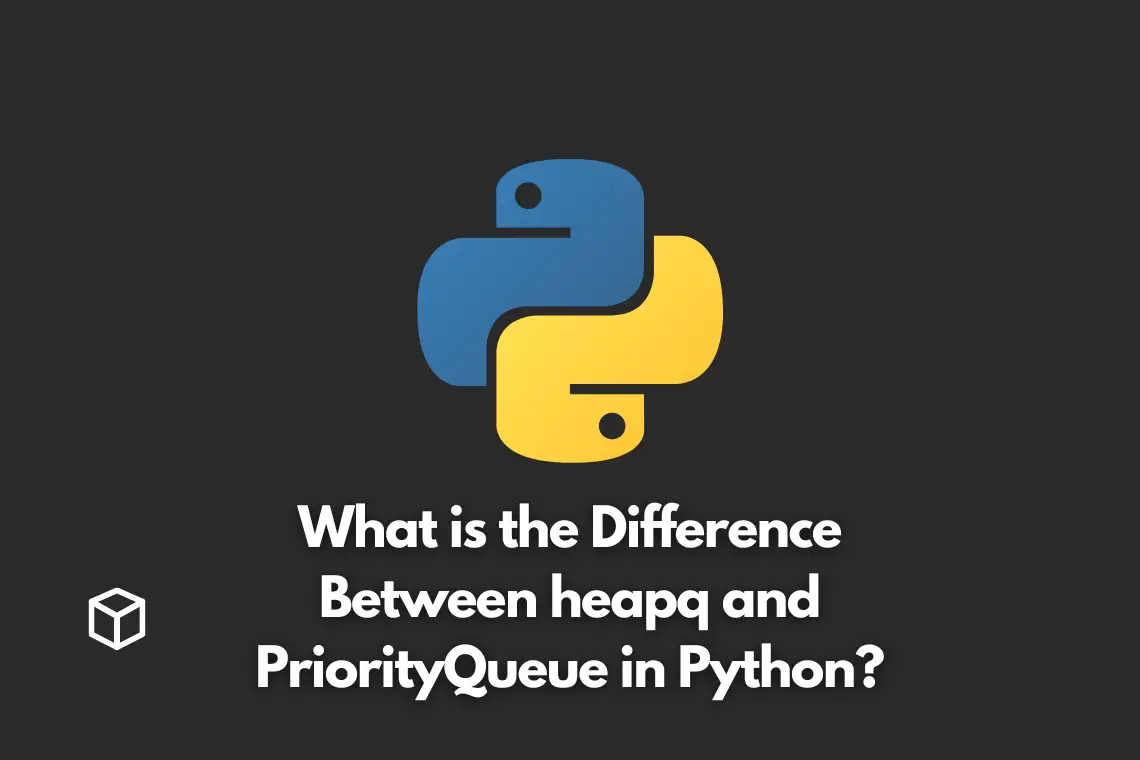In Python, the heapq module provides an implementation of the heap queue algorithm, also known as the priority queue algorithm.
On the other hand, the queue module provides a PriorityQueue class which is a pure Python implementation of a priority queue.
The key difference between the two is that heapq is a module that provides a heap data structure, which can be used to make a priority queue, whereas PriorityQueue is a class that implements a priority queue.
This means that heapq provides a lower-level implementation, whereas PriorityQueue provides a higher-level, more user-friendly implementation.
One of the main advantages of using heapq over PriorityQueue is that heapq has a smaller memory footprint, since it is implemented in C and doesn’t require the creation of a new object for each item in the queue.
On the other hand, PriorityQueue is pure Python and can be more easily subclassed to add custom functionality.
When using heapq to implement a priority queue, we can use the heappush() and heappop() functions to add and remove items, respectively.
The heappush() function takes an item and a priority as arguments, and adds the item to the heap with the corresponding priority.
The heappop() function removes and returns the item with the highest priority (or the lowest value, since the heap is implemented as a min heap).
On the other hand, when using PriorityQueue, we can use the put() and get() methods to add and remove items, respectively.
The put() method takes an item and a priority as arguments, and adds the item to the queue with the corresponding priority.
The get() method removes and returns the item with the highest priority (or the lowest value, since the queue is implemented as a min queue).
Here’s an example of how to use heapq to implement a priority queue:
import heapq # Create an empty list to store the heap heap = [] # Add some items to the heap heapq.heappush(heap, (2, 'second')) heapq.heappush(heap, (1, 'first')) heapq.heappush(heap, (3, 'third')) # Remove and print the top item item = heapq.heappop(heap) print(item) # Output: (1, 'first')
And here’s an example of how to use PriorityQueue to implement a priority queue:
from queue import PriorityQueue # Create a new PriorityQueue pq = PriorityQueue() # Add some items to the queue pq.put((2, 'second')) pq.put((1, 'first')) pq.put((3, 'third')) # Remove and print the top item item = pq.get() print(item) # Output: (1, 'first')
It’s worth noting that while the heapq and PriorityQueue can both be used to implement a priority queue, they have different use cases.
If you don’t need the additional methods and functionality provided by the PriorityQueue class, then using heapq might be a better choice, as it provides a more lightweight and efficient implementation.
On the other hand, if you need to add custom functionality to your priority queue, such as thread-safety or the ability to set a maximum size, then using the PriorityQueue class might be a better choice, as it is easier to subclass and customize.
Another thing to keep in mind is that PriorityQueue is thread-safe while heapq is not.
So if you want to use a priority queue in a multi-threaded environment, it’s better to use PriorityQueue.
In conclusion, while both heapq and PriorityQueue can be used to implement a priority queue in Python, they have different trade-offs and use cases.
heapq provides a lower-level, more efficient implementation, while PriorityQueue provides a higher-level, more user-friendly implementation with additional functionality.
When choosing between the two, it’s important to consider the specific requirements of your application and the trade-offs that each implementation offers.




